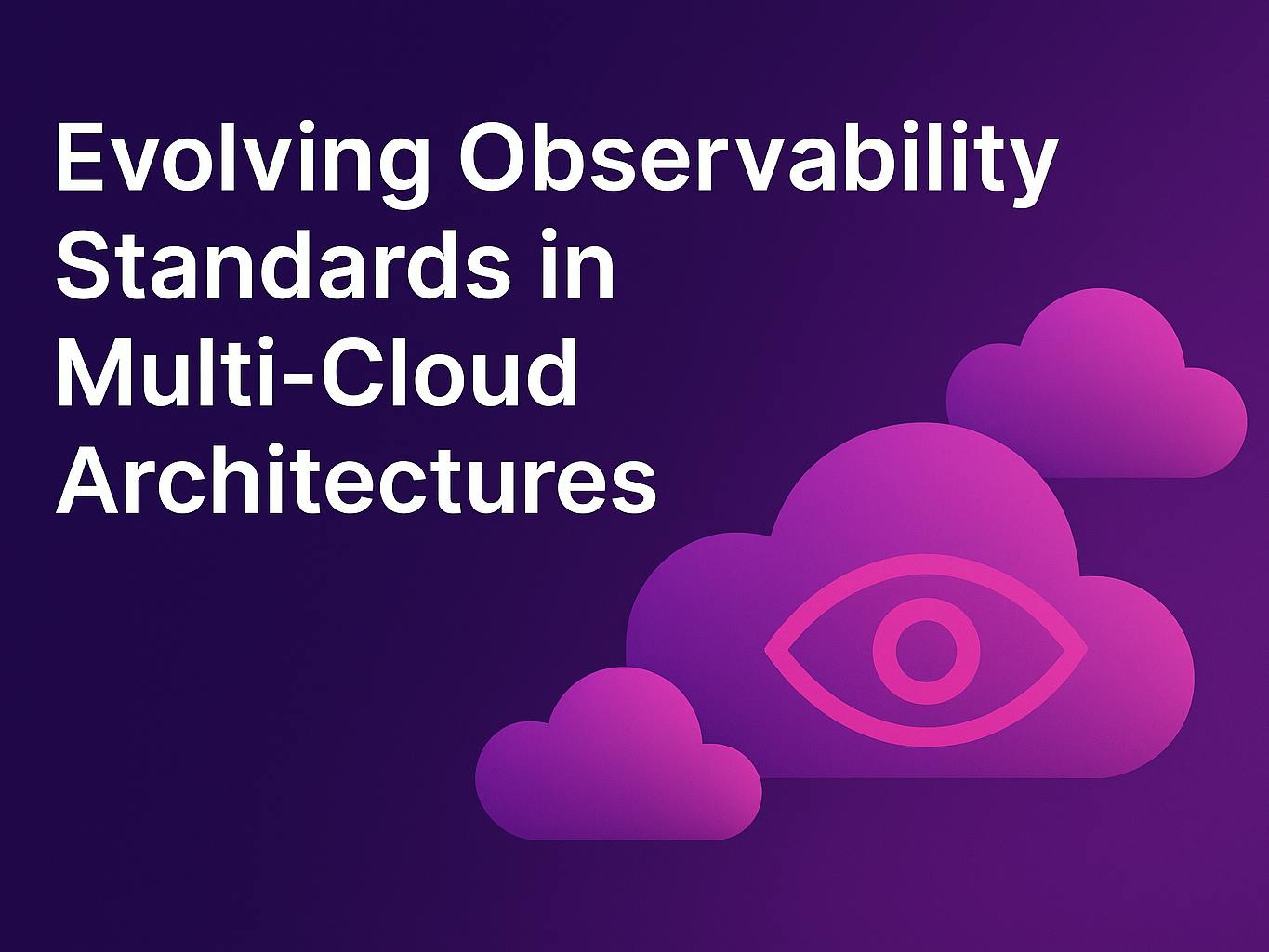Evolving Observability Standards in Multi-Cloud Architectures
Oct 5, 2025

As more organizations adopt multi-cloud strategies to use the best services from each provider and avoid being locked into one vendor, observability has become one of the biggest challenges in managing modern infrastructure. Monitoring apps across AWS, Azure, Google Cloud, and on-premise environments is complex. This has pushed the need for common observability standards that give unified visibility without taking away flexibility.
What makes OpenTelemetry different from older protocols?
OpenTelemetry (OTel) is now the go-to standard for observability instrumentation. It came from the merger of OpenTracing and OpenCensus and provides a complete set of APIs, SDKs, and tools for collecting, processing, and exporting metrics, traces, and logs.
Compared to older protocols like StatsD or Jaeger’s tracing format, OTel has big advantages. StatsD is simple and good for metrics, but it doesn’t support rich metadata or data correlation, which modern systems need. Jaeger and Zipkin are excellent for tracing, but they don’t cover metrics and logs, creating silos. OTel removes these silos with one unified approach.
The real power of OTel lies in its semantic conventions, which standardize how telemetry is structured and labeled. This makes it possible to understand and compare data consistently, no matter which infrastructure or monitoring tool you use.
Why are vendor-agnostic data pipelines important?
Traditional monitoring tools often tied data collection, processing, and storage tightly together. This made it hard to swap tools or send the same data to different platforms.
Modern observability is moving toward vendor-agnostic pipelines. The OTel Collector acts as a central hub: it can receive, transform, and route telemetry to multiple destinations at once.
Example: you could send traces to Jaeger for debugging and also to a cloud APM service for alerting without changing your app code.
The collector can also sample, filter, or enrich data before sending it out. This reduces the cost and effort of switching vendors or adding new tools. Instead of re-instrumenting apps, you just configure new exporters.
What challenges does hybrid cloud monitoring create?
Hybrid cloud (mix of cloud + on-prem) brings extra challenges.
- Network delays affect trace collection.
- Different security and compliance rules complicate things.
- Teams end up juggling multiple dashboards and query languages.
Teams also face operational problems: multiple dashboards and context-switching between tools. This slows down debugging and increases MTTR (mean time to resolution).
Standardized protocols help here by ensuring telemetry looks the same everywhere. With consistent data formats, teams can use unified dashboards and alerts across environments, improving efficiency and reducing friction.
How does standardization improve portability?
The biggest benefit of standardization is portability.
If you use OTel for instrumentation, you can move apps between cloud providers without losing observability. Tracing, logs, and metrics still connect, no matter where the workload runs.
This also enables true multi-cloud setups. For example:
- Run compute-heavy workloads on AWS
- Use Google Cloud for AI services
- Use Azure for compliance-driven workloads
With standardized observability, this becomes manageable.
It also cuts costs: organizations can negotiate better vendor deals and route different data types to cheaper storage or analysis tools.
What trends are shaping the future of multi-cloud observability?
Several trends are shaping the future of multi-cloud observability:
- Service meshes (like Istio, Linkerd) now use OTel as the main observability mechanism, giving automatic instrumentation across services.
- Kubernetes acts as a unifying layer, with observability tools increasingly building on top of it. APIs like Vertical Pod Autoscaler show how platform-level standards drive innovation.
- Edge computing requires new data strategies. More organizations process and filter telemetry at the edge first, only sending critical data to central systems.
- GitOps integration is growing. Observability configs, dashboards, alerts, and monitoring rules are being versioned and deployed as code, just like apps.
Final Thoughts
Multi-cloud and hybrid architectures are here to stay. The organizations that adopt open, vendor-agnostic observability standards will be the ones with the edge: faster debugging, lower costs, and more freedom to use the best tools from each provider.
This shift toward open standards is more than a technical upgrade. It’s a fundamental change in how we think about and manage observability in a complex, distributed world.